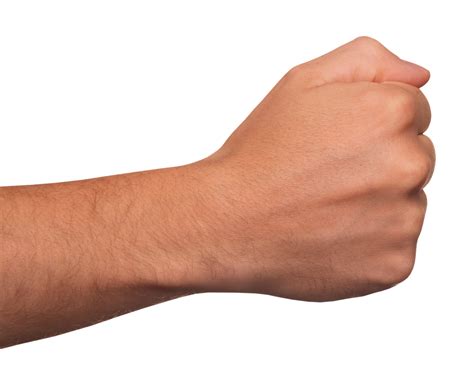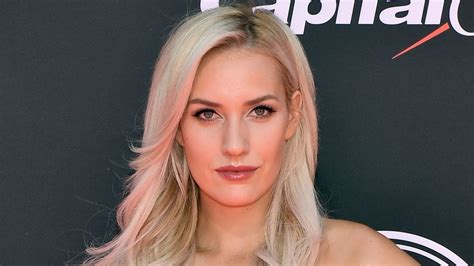
Paige Spiranac suggests that golfers struggling with their game might benefit from a less restrictive wardrobe, arguing that comfort and confidence on the course can lead to improved performance.
Former professional golfer turned social media influencer Paige Spiranac has sparked debate with her recent comments suggesting that golfers struggling with their game should consider wearing less clothing. Spiranac, known for her provocative social media content and outspoken opinions, argues that comfort and confidence on the golf course are paramount to success and that restrictive clothing can hinder a player’s swing and overall performance.
“Sometimes, you just need to wear less clothes,” Spiranac stated on a recent episode of her podcast, “Playing A Round with Paige Renee.” She elaborated, explaining that feeling good in what you’re wearing can translate to a better mindset and ultimately, a better golf game. “When I feel good about myself, I play good golf. And I know that’s not the case for everyone, but I think feeling confident in what you’re wearing can make a huge difference.”
Spiranac’s remarks have ignited discussions across the golf community, with some applauding her unconventional approach and others criticizing her for what they perceive as a superficial suggestion. However, Spiranac maintains that her advice is not solely about aesthetics but about the practical benefits of unrestricted movement and enhanced self-assurance.
“I’m not saying you need to go out there in a bikini,” Spiranac clarified. “But if you’re comfortable in a tank top and shorts, and that allows you to swing freely and feel confident, then why not? Golf is hard enough as it is. Anything that can give you a mental edge is worth considering.”
This isn’t the first time Spiranac has challenged the conservative norms of the golf world. She has consistently used her platform to advocate for greater inclusivity and challenge traditional dress codes that she believes are outdated and discriminatory. Her advocacy has often been met with both praise and criticism, solidifying her status as a polarizing figure in the sport.
The debate over Spiranac’s comments highlights a broader discussion about the role of appearance and self-perception in athletic performance. While scientific evidence directly linking clothing choices to golf scores is limited, numerous studies have shown a correlation between confidence and athletic success. Athletes who feel confident in their abilities and appearance are often more likely to perform at their best, regardless of the specific sport.
Moreover, the psychological impact of clothing on performance is a well-documented phenomenon. Studies in fields such as psychology and sports science have demonstrated that clothing can influence an individual’s self-esteem, mood, and even cognitive function. For example, research has shown that wearing clothing associated with power or authority can lead to increased confidence and assertiveness.
In the context of golf, where mental fortitude and precision are critical, the psychological benefits of feeling comfortable and confident in one’s attire could potentially translate to improved performance. However, experts caution that the relationship between clothing and performance is highly individual and depends on various factors, including personal preferences, cultural norms, and the specific demands of the sport.
While Spiranac’s suggestion may not be a universal solution for all struggling golfers, it underscores the importance of considering the psychological aspects of the game. Feeling comfortable, confident, and empowered on the course can contribute to a more positive mindset and potentially unlock a golfer’s full potential. Whether that involves wearing less clothing or simply choosing attire that promotes comfort and self-assurance, the key is to find what works best for the individual golfer.
The golf world remains divided on Spiranac’s advice, with some dismissing it as mere self-promotion and others viewing it as a legitimate point about the importance of mental well-being in sports. Regardless of one’s opinion, Spiranac’s comments have undoubtedly sparked a conversation about the role of appearance, confidence, and comfort in athletic performance, a discussion that is likely to continue as the sport evolves.
Expanded Context and Background Information
Paige Spiranac’s rise to prominence is a testament to the power of social media in shaping modern sports personalities. She transitioned from a promising collegiate golfer to a global influencer, leveraging her athletic background, engaging personality, and striking looks to build a massive following across various platforms. Her success is not without controversy, as she has often faced criticism for her provocative content and challenges to traditional golf norms.
Spiranac’s initial aspirations were rooted in competitive golf. She earned a golf scholarship to the University of Arizona and later transferred to San Diego State University, where she led the Aztecs to their first Mountain West Conference Championship. Despite her collegiate success, Spiranac struggled to find her footing in the professional ranks. After a brief stint on the Cactus Tour, she realized that her path lay elsewhere.
Recognizing the potential of social media, Spiranac began to cultivate her online presence. She started by sharing golf tips, workout routines, and glimpses into her personal life. Her engaging content quickly attracted a large following, and she soon became one of the most recognizable faces in the golf world.
However, Spiranac’s success has not been without its challenges. She has faced constant scrutiny and criticism for her appearance, with some accusing her of objectifying herself and undermining the integrity of the sport. She has also been targeted by online trolls and cyberbullies, who have subjected her to hateful and misogynistic comments.
Despite the negativity, Spiranac has remained resilient and has used her platform to advocate for positive change in the golf industry. She has spoken out against sexism, body shaming, and the lack of diversity in the sport. She has also supported various charitable causes and has used her influence to raise awareness about important issues.
Spiranac’s latest comments about wearing less clothing to improve one’s golf game are consistent with her outspoken and unconventional approach. While her suggestion may seem simplistic or even provocative, it reflects her belief that confidence and comfort are essential to success in any endeavor, including golf.
The science of clothing and performance is a complex and evolving field. While there is no direct scientific evidence to support the claim that wearing less clothing will automatically improve one’s golf score, there is ample research to suggest that clothing can have a significant impact on psychological well-being, which in turn can affect athletic performance.
Studies have shown that clothing can influence an individual’s self-esteem, mood, and cognitive function. For example, wearing clothing that is perceived as attractive or fashionable can boost self-confidence and improve social interactions. Similarly, wearing clothing that is associated with power or authority can increase feelings of assertiveness and control.
In the context of sports, clothing can also affect an athlete’s comfort, mobility, and overall performance. Restrictive clothing can hinder movement and impair athletic performance, while comfortable and breathable clothing can enhance freedom of movement and improve comfort.
Ultimately, the relationship between clothing and performance is highly individual and depends on a variety of factors, including personal preferences, cultural norms, and the specific demands of the sport. While Spiranac’s suggestion may not be a universal solution for all golfers, it underscores the importance of considering the psychological and physical aspects of clothing when choosing what to wear on the golf course.
The discussion surrounding Spiranac’s comments also highlights the ongoing debate about dress codes in golf. Traditionally, golf has been a conservative sport with strict dress codes that emphasize formality and modesty. However, in recent years, there has been a growing movement to relax these dress codes and make the sport more inclusive and accessible.
Critics of traditional dress codes argue that they are outdated, discriminatory, and discourage participation from women and minorities. They contend that dress codes should be based on functionality and comfort, rather than arbitrary standards of formality.
Proponents of traditional dress codes argue that they are essential to maintaining the integrity and respectability of the sport. They believe that dress codes help to create a sense of order and decorum on the golf course and that they contribute to the overall experience of the game.
The debate over dress codes in golf is likely to continue as the sport evolves and becomes more diverse. However, it is clear that there is a growing demand for more relaxed and inclusive dress codes that allow golfers to express their individuality and feel comfortable on the course.
In-Depth Analysis
Paige Spiranac’s advocacy for comfortable and confidence-boosting attire on the golf course taps into a deeper understanding of the psychological and physiological factors that influence athletic performance. While her suggestion of “less clothes” might be interpreted literally by some, the underlying message is about breaking free from restrictive norms and embracing what makes an individual feel empowered.
The psychology of clothing, also known as “enclothed cognition,” suggests that clothing influences our psychological processes and affects how we think, feel, and behave. This concept goes beyond mere aesthetics and delves into the symbolic meaning we attach to certain garments. When an athlete wears clothing that makes them feel confident and comfortable, it can trigger a positive feedback loop that enhances their performance.
For instance, if a golfer feels restricted by traditional golf attire, such as collared shirts and stiff trousers, it can lead to increased tension and inhibited movement. This can negatively impact their swing and overall performance. On the other hand, wearing clothing that allows for a full range of motion and promotes a sense of freedom can lead to a more relaxed and fluid swing.
Moreover, the act of choosing clothing that aligns with one’s personal style and preferences can boost self-esteem and confidence. When an athlete feels good about their appearance, it can translate into a more positive mindset and a greater willingness to take risks. This can be particularly beneficial in golf, where mental fortitude and precision are essential.
However, it’s important to acknowledge that the relationship between clothing and performance is highly individual and depends on various factors. What works for one golfer may not work for another. Some golfers may feel more confident and focused in traditional golf attire, while others may prefer more casual and comfortable clothing.
Ultimately, the key is to find what works best for the individual golfer. It’s about experimenting with different styles and fabrics to find clothing that promotes comfort, freedom of movement, and a positive mindset. Whether that involves wearing less clothing or simply choosing attire that aligns with one’s personal preferences, the goal is to feel confident and empowered on the course.
The Broader Implications for the Golf Industry
Paige Spiranac’s comments have broader implications for the golf industry, particularly in terms of inclusivity and accessibility. For years, golf has been perceived as an exclusive sport with strict rules and traditions that can be intimidating to newcomers. This has created barriers to entry for women, minorities, and individuals from lower socioeconomic backgrounds.
By challenging traditional dress codes and advocating for more comfortable and inclusive attire, Spiranac is helping to break down these barriers and make the sport more accessible to a wider audience. Her message is that golf should be about having fun and enjoying the game, regardless of what you’re wearing.
This shift towards inclusivity is essential for the long-term growth and sustainability of the golf industry. As the sport becomes more diverse and welcoming, it will attract new players and fans, which will ultimately benefit the entire ecosystem.
Moreover, Spiranac’s advocacy for comfortable and confidence-boosting attire can also help to improve the overall experience of playing golf. When golfers feel good about themselves and their appearance, they are more likely to enjoy the game and keep coming back for more. This can lead to increased participation and a more vibrant golf community.
In addition to challenging traditional dress codes, Spiranac is also advocating for greater representation and diversity in the golf industry. She has used her platform to amplify the voices of women and minorities and to call for more opportunities for these groups in the sport.
Her efforts have not gone unnoticed. In recent years, there has been a growing movement to promote diversity and inclusion in golf, with organizations such as the PGA and the USGA launching initiatives to support women and minorities in the sport.
Paige Spiranac’s influence extends beyond her social media presence. She has become a role model for many aspiring golfers, particularly young women who are looking to break into the sport. Her message is that anything is possible with hard work, dedication, and a positive attitude.
As the golf industry continues to evolve, it’s important to embrace change and challenge traditional norms that may be hindering growth and inclusivity. Paige Spiranac’s advocacy for comfortable attire and greater diversity is a step in the right direction, and it can help to create a more welcoming and vibrant golf community for all.
Addressing Potential Criticisms
While Paige Spiranac’s comments have resonated with many golfers, they have also faced criticism from some who believe that she is simply using her appearance to attract attention and that her advice is not practical or helpful.
One common criticism is that Spiranac’s suggestions are unrealistic and that most golf courses would not allow golfers to wear revealing clothing. While it’s true that some golf courses have stricter dress codes than others, there is a growing trend towards more relaxed and inclusive dress codes.
Moreover, Spiranac has clarified that she is not advocating for golfers to wear revealing clothing, but rather to choose attire that is comfortable, functional, and aligns with their personal style. She has emphasized that the key is to feel confident and empowered on the course, regardless of what you’re wearing.
Another criticism is that Spiranac’s advice is superficial and that it doesn’t address the underlying issues that are affecting a golfer’s performance. While it’s true that clothing is not the only factor that influences a golfer’s game, it can have a significant impact on their psychological well-being, which in turn can affect their performance.
Ultimately, Spiranac’s advice is not intended to be a quick fix for all golfers. It’s simply a suggestion that golfers should consider the psychological and physical aspects of clothing when choosing what to wear on the golf course. If wearing more comfortable and confidence-boosting attire can help a golfer to feel more relaxed and focused, then it’s worth considering.
Conclusion
Paige Spiranac’s recent comments about wearing less clothing to improve one’s golf game have sparked a debate about the role of appearance, confidence, and comfort in athletic performance. While her suggestion may seem simplistic or even provocative, it underscores the importance of considering the psychological and physical aspects of clothing when choosing what to wear on the golf course.
Spiranac’s advocacy for comfortable attire and greater diversity is a step in the right direction for the golf industry, and it can help to create a more welcoming and vibrant golf community for all. As the sport continues to evolve, it’s important to embrace change and challenge traditional norms that may be hindering growth and inclusivity. Whether that involves wearing less clothing or simply choosing attire that aligns with one’s personal preferences, the goal is to feel confident and empowered on the course.
Frequently Asked Questions (FAQ)
-
What exactly did Paige Spiranac say about wearing less clothing to improve your golf game?
Paige Spiranac suggested that golfers who are struggling with their game might benefit from wearing less restrictive clothing. She believes that comfort and confidence on the course are crucial for improved performance, and that restrictive clothing can hinder a player’s swing and overall mindset. She clarified that she wasn’t advocating for revealing outfits but rather for comfortable attire that allows for freedom of movement.
-
Is there any scientific evidence to support Spiranac’s claim that clothing can affect golf performance?
While there isn’t direct scientific evidence specifically linking clothing choices to golf scores, numerous studies have shown that clothing can influence psychological well-being, such as self-esteem, mood, and cognitive function. In the context of sports, comfortable and non-restrictive clothing can enhance freedom of movement and improve comfort, potentially leading to better athletic performance. The impact is highly individual and depends on personal preferences.
-
How has the golf community reacted to Spiranac’s comments?
The reaction has been mixed. Some support her perspective, viewing it as a challenge to outdated norms and an emphasis on the importance of mental comfort in sports. Others have criticized her, accusing her of sensationalism or downplaying the technical aspects of golf. This division reflects the ongoing debate about traditionalism versus inclusivity within the sport.
-
What are the traditional dress codes in golf, and how are they changing?
Traditionally, golf has had strict dress codes emphasizing formality, including collared shirts, trousers or skirts of appropriate length, and specific types of shoes. However, there’s a growing movement towards more relaxed and inclusive dress codes, particularly at public courses. This shift aims to make the sport more accessible and welcoming to a broader audience. The debate over dress codes continues, with proponents of traditional codes valuing respect and decorum, while those advocating for change prioritize comfort and individuality.
-
What is Paige Spiranac’s overall impact on the golf industry beyond her recent comments?
Paige Spiranac has significantly impacted the golf industry by using her platform to advocate for greater inclusivity, challenge traditional norms, and promote a more relaxed and accessible image of the sport. She has also been a vocal critic of sexism and body shaming within the industry, inspiring many aspiring golfers, especially young women, and contributing to a more diverse and inclusive golf community.









